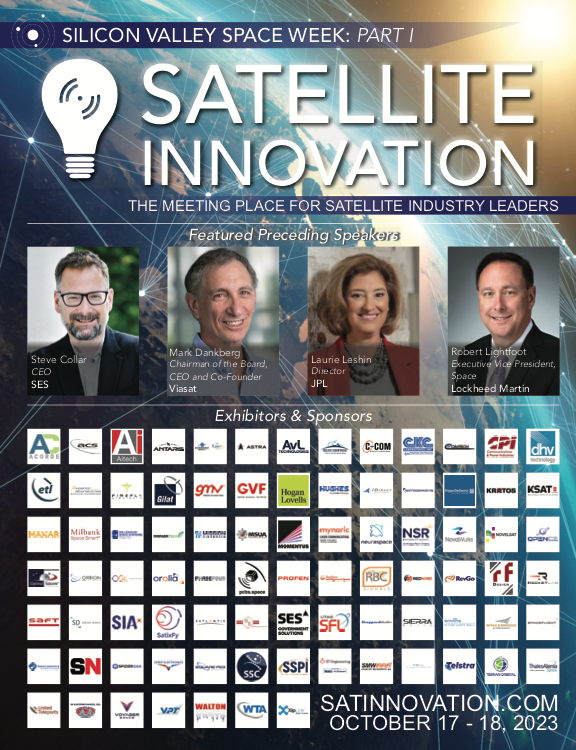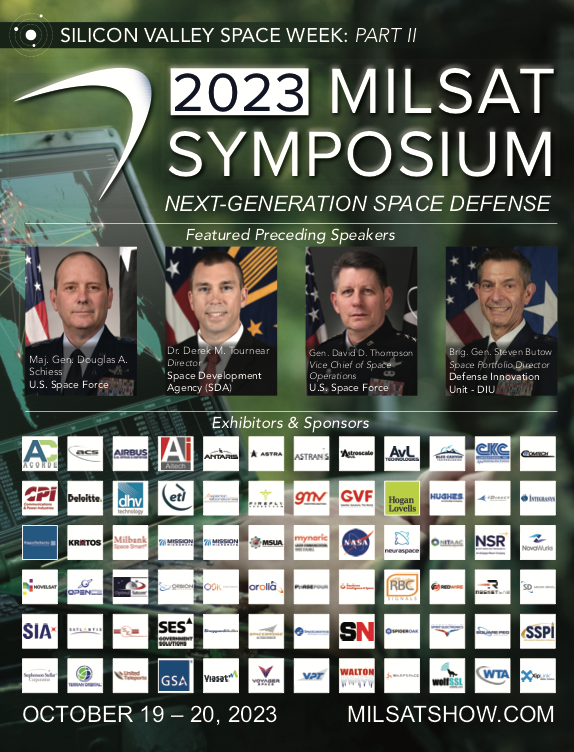Thuraya + eSAT Global announce satIoT breakthrough
Thuraya and eSAT Global have successfully completed an over-the-air demo of low-latency, direct-to-satellite IoT texting system by transmitting low- power, IoT messages over Thuraya’s satellite network (Thuraya-2).
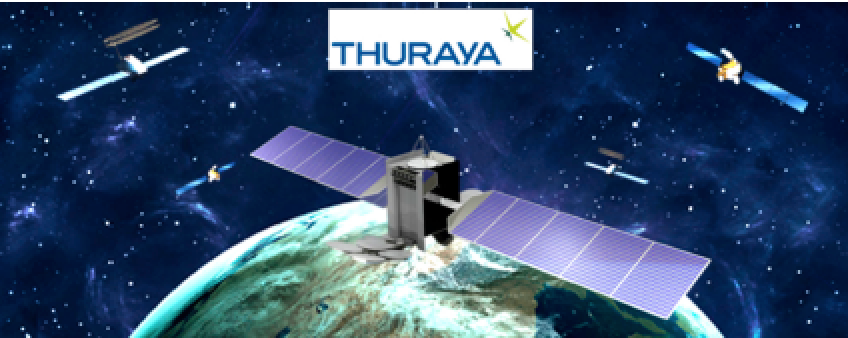
This milestone is the first of several that Yahsat expects to achieve via its investment in eSAT Global and Thuraya’s agreement with the company to develop a nexgen IoT platform.
eSAT was able to send and receive messages of lengths of up to 320 characters over the T2 satellite with less transmission power (< 200 microwatts) than that used by a typical car key fob.
This means that only minimal power is needed to transmit long-distance messages. The demo showed stable operations for a range of configurations, including those with a fingernail-sized antenna.
Other technologies, such as Narrowband- IoT (NB-IoT), consume more satellite transmit power and bandwidth for the provision of similar texting and messaging services.

The reduced level of power and bandwidth consumption allow GEO-MSS satellite operators to regulate cost per message, generating significant savings for their customers, in comparison to other satellite- based messaging technologies.
A further benefit of this approach is that very significant numbers of endpoint terminals can be simultaneously serviced under Thuraya’s coverage.
The successful demo provides strong impetus to Thuraya’s and eSAT’s efforts to effectively use the resources of existing GEO-MSS satellites and thus unlocks a new avenue of revenue opportunities for satellite operators in the IoT and texting markets.
“This demonstration by Thuraya and eSAT Global underscores our mutual commitment to advance the fast-growing IoT sector. It is also a strong testament of the growing synergy between the business activities of leading satellite operators, with Yahsat and its mobility arm Thuraya at the forefront, and IoT solution providers. Having only just invested in eSAT Global in October 2022, we are pleased by the pace of this development. The new capabilities that are being implemented in our existing M2M/IoT ecosystem will enable us to offer even more compelling IoT solutions to Thuraya’s customers.”
— Ali Al Hashemi, Chief Executive Officer, Yahsat Group
“Achievement of this milestone is a critical step towards mass market commercial service initiation later this year. Customers are excited by the news, and we are receiving enormous interest in this new capability well in advance of the launch. Our prospective sales pipeline is already greater than one hundred million dollars. Within two years of commencement of operations we expect to double the number of IoT devices currently connected to satellites around the world.”
— Rick Somerton, CEO, eSAT Global
Rocket Lab’s million$$ purchase of Virgin Orbit’s assets bolster the firm’s Neutron rocket program
Rocket Lab USA, Inc. (Nasdaq: RKLB) has been selected as a successful bidder and is finalizing an asset purchase agreement to obtain certain aerospace production and manufacturing assets from Virgin Orbit Holdings, Inc., and certain of its subsidiaries (“Virgin Orbit”), in Virgin Orbit’s Chapter 11 bankruptcy auction. Rocket Lab’s successful bid of approximately $16.1 million does include the assumption of the lease of Virgin Orbit’s 144,000+ square foot headquarters and manufacturing complex at 4022 E. Conant St. in Long Beach, California, (the “Conant Facility”), and certain production assets, machinery and equipment that is located there.
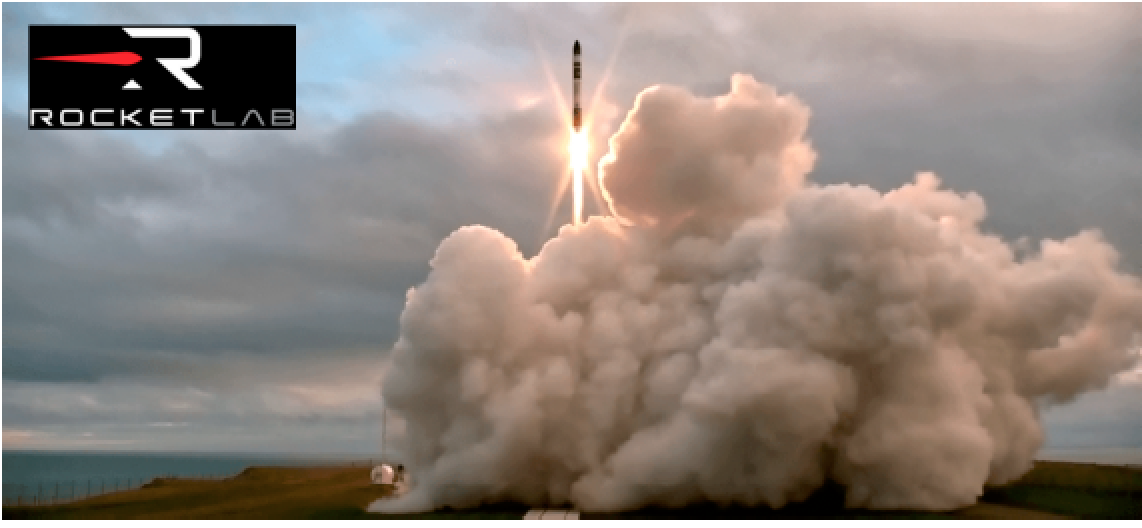
The successful bid does not include the purchase of Virgin Orbit’s Boeing 747 aircraft, launch vehicles or mobile launch assets for its rockets, or other Virgin Orbit facilities, inventory and assets.
The purchase remains subject to finalizing the purchase agreement and approval of the United States Bankruptcy Court for the District of Delaware that is administering Virgin Orbit’s Chapter 11 bankruptcy cases as well as other customary, closing conditions.
The combination of these assets with Rocket Lab’s existing production, manufacturing, and test capabilities is expected to advance the production of Rocket Lab’s larger launch vehicle, Neutron.
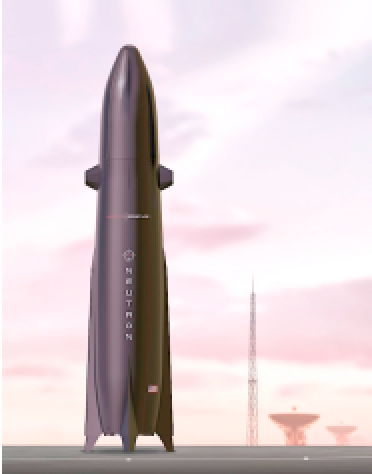
Neutron is designed for mega constellation
deployment, deep space missions, and human
spaceflight; its efficient reusability enables it
to return to launch site; the captive fairing
design allows for fully reusable first stage and
fairing; and a lightweight specially formulated
Rocket Lab carbon composite structure.
Rocket Lab will not be integrating Virgin Orbit’s launch system within its existing launch services.
Founded in 2006, Rocket Lab is an end-to-end space company providing launch services, satellite manufacture, spacecraft components, and on-orbit management solutions.
Headquartered in Long Beach, California, Rocket Lab designs and manufactures the Electron small orbital launch vehicle, the Photon satellite platform and the firm is developing the large Neutron launch vehicle for constellation deployment. Rocket Lab has three launch pads at two launch sites, including two launch pads at a private orbital launch site located in New Zealand and a third pad in Virginia.
“Rocket Lab is a global industry leader in launch, and our new, larger rocket Neutron will bring added reliability, reusability, and innovation to the launch sector. With Neutron’s design and development well-advanced, this transaction represents a capital expenditure savings opportunity to augment our production capability to bring Neutron to the launch pad quickly to serve our customers.”
— Rocket Lab CEO and Founder, Peter Beck
The COSPAR satellite for advanced Earth science research enjoys collaboration from five countries
HEX20 is collaborating with...
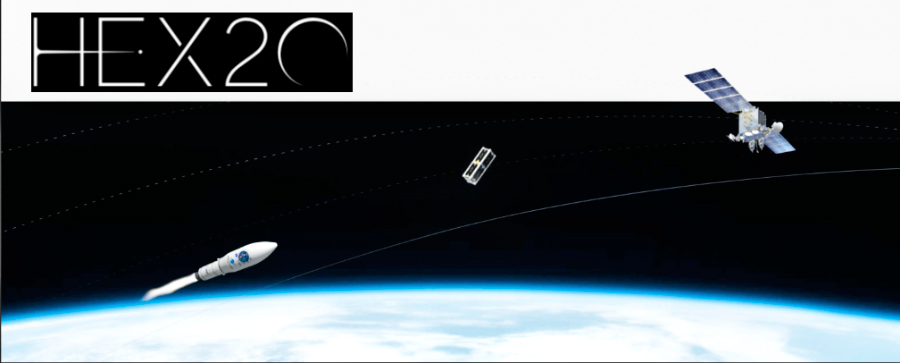
• Laboratory for Atmospheric and Space Physics (LASP – USA)
• National Central University Center for Astronautical Physics and Engineering (NCU CAPE – Taiwan)
• Laboratoire Atmosphères, Milieux, Observations Spatiales (LATMOS – France)
• SKYROOT Aerospace – India
This global to launch the COSPAR satellite, a remarkable achievement in space technology that will pave the way for new research opportunities.
This collaborative effort has been made possible with the coordination and support of the Committee on Space Research (COSPAR).
The COSPAR satellite aims to study various aspects of Earth’s atmosphere, including atmospheric dynamics and chemistry, as well as the effects of space weather on our planet. The satellite will also provide valuable data to support weather forecasting and climate modelling.
With this project, the collaborating teams hope to contribute to the advancement of scientific knowledge and exploration.
“The expertise and resources of HEX20, LASP, NCU CAPE, LATMOS and SKYROOT have combined to make this projects a reality. We are proud to be working together to contribute to the advancement of scientific knowledge and exploration. The COSPAR Satellite is a remarkable achievement that will benefit researchers and scientists worldwide. This joint effort is a testament to the power of collaboration and demonstrates what can be achieved when experts from different fields work together.”
— Lloyd Lopez, HEX20 CEO
”In 2021, we initiated a Task Group to develop a constellation of small satellites for space science missions dealing with the ionosphere, radiation belts or the Earth atmosphere, possibly extending in the future to solar system planetary missions. The aim for COSPAR is to act as a honest broker, to coordinate the programs and then distribute science data received from various payloads developed by partnering entities world-wide. I am extremely happy to see the first step of this ambitious venture materializing, through this joint project with HEX20, LASP, NCU CAPE, LATMOS and Skyroot.”
— Jean-Claude Worms, COSPAR Executive Director
“Space is emerging as one of the fastest growing commercial sectors in Australia with unique advantages such as Australia’s physical location in the southern hemisphere, a strong platform for research training, and strong technical expertise.”
— Abdul Ekram, Austrade’s Trade and Investment Commissioner to India
About HEX20: HEX20 provides turnkey satellite mission solutions designed and delivered according to customer requirements. The modular and scalable buses can support missions for commercial and defence applications. Hex20 is currently working with its partners to build up sovereign capability within South Australia.
About LASP: LASP (Laboratory for Atmospheric and Space Physics) is a research institution located at the University of Colorado Boulder, focused on advancing space science and technology through innovative research and education.
About NCU CAPE: NCU CAPE (National Central University Center for Astronautical Physics and Engineering) is a leading research center in Taiwan, dedicated to advancing the field of space science and technology. They conduct cutting- edge research, provide education and training, and collaborate with international partners to explore the frontiers of space.
About LATMOS: LATMOS (Laboratoire Atmosphères, Milieux, Observations Spatiales) is a leading research center in France, focused on understanding the Earth’s atmosphere and its interactions with space. Their research covers a range of topics, including climate change, air quality, and planetary science, and they work in collaboration with partners across the globe.
About Skyroot Aerospace: Skyroot Aerospace is an Indian space technology company that designs and manufactures rocket engines and launch vehicles. They aim to make access to space affordable and sustainable by developing innovative technologies and solutions.
About COSPAR: The Committee on Space Research (COSPAR) is an international scientific organization dedicated to promoting and coordinating space research among nations. They facilitate international cooperation in space research, exchange information and ideas, and organize scientific meetings and conferences to advance the understanding of the Earth and the universe.
Space Autonomous Navigation Systems Market worth million$$$ by 2033
The Market Statsville Group (MSG) has published a report on the “Space Autonomous Navigation Systems Market by Type (Fully Autonomous, and Semi-Autonomous), by System (Sensing System, Processing System, and Software System), by End-Use Industry (Commercial, Military, and Government), and by Region (APAC, Europe, and Others) – Global Share and Forecast to 2033“
According to the company, the global Space Autonomous Navigation Systems market size is expected to grow at a CAGR of 15.4% from 2023 to 2033.
One of the key trends driving the space autonomous navigation systems market is the increasing miniaturization of systems. As systems and sensors become smaller and more compact, they can be integrated into smaller spacecraft, making it possible to launch smaller, more cost- effective missions. This is particularly important for interplanetary missions, where the cost of launching and operating a spacecraft can be a significant barrier.
According to NASA, “small spacecraft and CubeSats are enabling new scientific and technological capabilities and are transforming the way we explore and study our solar system.”
NASA is investing in developing smallsats and CubeSats, which is driving the demand for smaller and more advanced space autonomous navigation systems. Another trend driving the space autonomous navigation systems market is the growing use of AI and machine learning.
Autonomous navigation systems must operate in deep space without human intervention, and AI and machine learning are making it possible to develop more intelligent and capable sensors. These technologies enable space autonomous navigation systems to make decisions based on data they collect, contributing to the market’s growth.
The European Space Agency (ESA) is also investing in using AI and machine learning to develop space autonomous navigation systems. According to ESA, “artificial intelligence and machine learning are key technologies for the future of space exploration, enabling missions to operate more independently and effectively.“
These trends are making it possible to develop more advanced and capable space autonomous navigation systems, and this is contributing to the growth of the market. As technology continues to advance, it is likely that the demand for space autonomous navigation systems will continue to grow, providing a significant opportunity for companies in the industry.
Global Space Autonomous Navigation Systems Market Segmentation
The overall space autonomous navigation systems market has been segmented into type, end-use industry, and region. Commercial segment is at the highest CAGR during the forecast period. The Commercial segment is expected to grow at the highest CAGR during the forthcoming. This is due to the increasing demand for space-based services and the growth of the private space industry. Commercial segment companies invest heavily in space exploration and require advanced navigation systems to support their spacecraft and rovers in deep space.
Deep space space autonomous navigation systems are essential in these missions, enabling spacecraft to navigate through deep space with minimal human intervention, reducing the risk of human error, and improving mission success rates.
Asia Pacific (APAC) accounts for the highest CAGR during the forecast period Over the forecast period, the APAC market is expected to grow rapidly. Several countries in the region, including China, Japan, and India, have been investing heavily in space programs and technologies, including space autonomous navigation systems, to support their space missions. In addition, the growing commercial space industry in the region is also driving the demand for advanced navigation systems to support spacecraft and rovers in deep space.
The APAC market for space autonomous navigation systems is expected to see significant growth in the coming years, supporting the development of new space missions and unlocking new opportunities for space-based services.
This research report includes a study on the development and marketing strategies, along with a study on the product portfolios and winning strategies of the leading companies operating in the space autonomous navigation systems market.
It also consists of the profiles of leading companies such as Advanced AAC Clyde Space, Antrix, Arcsec, Blue Canyon Technologies, Chang Guang Satellite, Jena-Optronik GmbH, Nanoavionics, O.C.E Technology, Redwire, Sinclair Interplanetary, Sodern S.A, Spacemicro, TY-Space Technology Ltd., Vectronic Aerospace, EICAS, SpinWorks, and Leonardo.
The key players’ growing research and development activities for launching innovative solutions with advanced features and strategic unions are expected to drive market growth.
Request a sample of the report at this direct link…
Momentus deploys Qosmosys satellite + starts comprehensive on-orbit support
Momentus Inc. (NASDAQ: MNTS) has deployed the Qosmosys Zeus-1 payload from the company’s Vigoride-5 Orbital Service Vehicle and is now providing comprehensive hosted payload support services for Caltech’s Space-based, Solar Power Project payload.
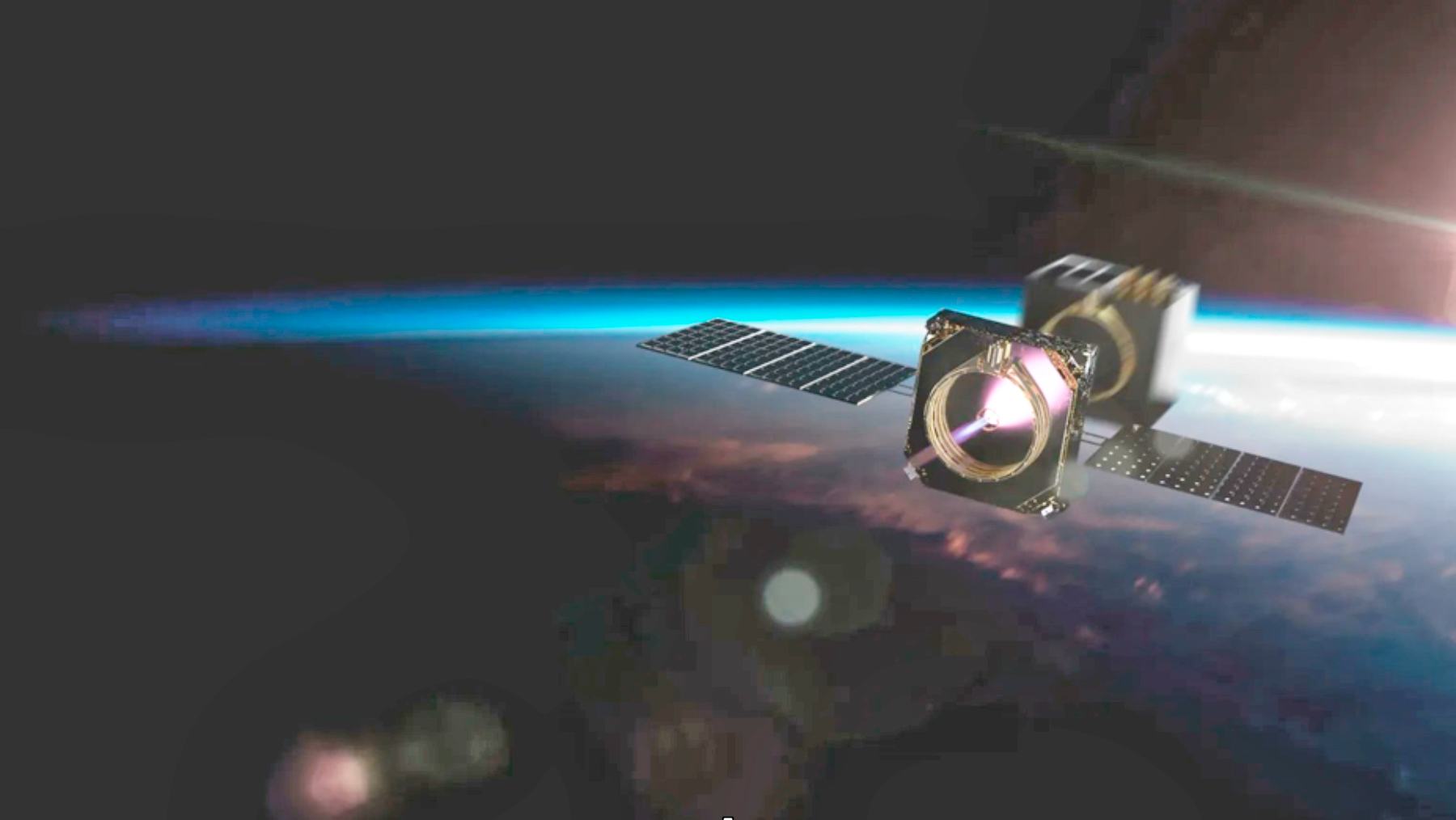
The Qosmosys Zeus-1 payload was deployed to orbit on May 10, 2023.
Effective May 15, 2023, Momentus is providing on-orbit support to Caltech, including providing data, communication, commanding and telemetry, and resources for optimal picture taking and solar cell lighting.
Momentus will also be performing thrusting maneuvers so Caltech can measure the behavior of their experiments.
Caltech’s Space Solar Power Demonstrator project onboard Momentus’ Vigoride-5 spacecraft comprises three separate experiments. The experiments include:
• DOLCE (Deployable on- Orbit ultraLight Composite Experiment): A structure measuring 6 feet by 6 feet that demonstrates the architecture, packaging scheme and deployment mechanisms of the modular spacecraft that would eventually make up a kilometer-scale constellation forming a power station.

• ALBA: A collection of 32 different types of photovoltaic (PV) cells, to enable an assessment of the types of cells that are the most effective in the punishing environment of space.
• MAPLE (Microwave Array for Power-transfer Low-orbit Experiment): An array of flexible lightweight microwave power transmitters with precise timing control focusing the power selectively on two different receivers to demonstrate wireless power transmission at distance in space.
“We thank Caltech and Qosmosys for entrusting us with their important payloads. With the Zeus-1 payload from Qosmosys safely in its orbit, our team is now dedicated to providing support for Caltech as they test technology that aims to collect solar power in space to use on Earth. Our contract has our team supporting this payload for six months and we look forward to seeing what Caltech learns from their experiments.”
— Krishnan Anand, Vice President of Program Management, Momentus
Momentus is a U.S. commercial space company that offers in-space infrastructure services, including in-space transportation, hosted payloads and on-orbit services. Momentus believes it can make new ways of operating in space possible with its planned in-space transfer and service vehicles that will be powered by an innovative water plasma-based propulsion system.
HawkEye 360 initiates manufacturing of their Satellite Clusters 12 + 13 under SFL’s Flex program
Space Flight Laboratory (SFL) has announced that HawkEye 360 has initiated manufacturing of the 12th and 13th Clusters of the company’s radio frequency (RF) geolocating, smallsat constellation — the six satellites are being built on SFL’s 30 kg DEFIANT platform at the HawkEye 360 facility in Virginia under the SFL Flex Production program.
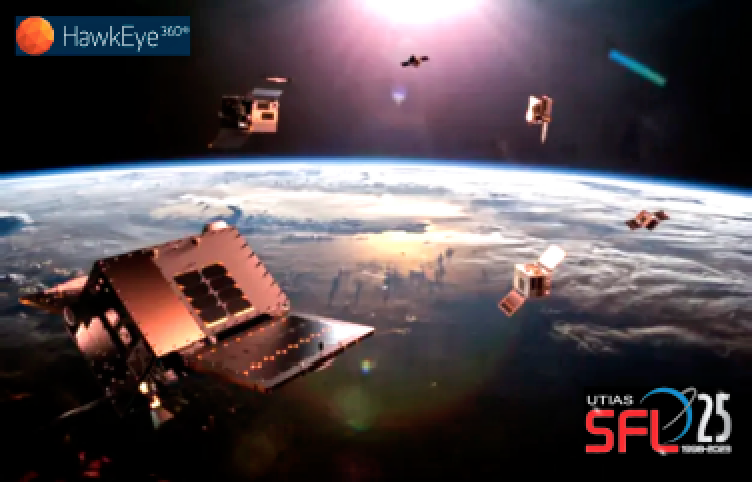
Artistic rendition of HawkEye 360’s constellation based on SFL’s
DEFIANT smallsat bus.
In April of 2023, the organizations celebrated the launch and deployment of Cluster 7, the first three satellites integrated in-house by HawkEye 360 as part of the production plan created by
SFL. Flex Production gives SFL clients the option of having satellites built at SFL’s Toronto headquarters or setting up in- house production capabilities at their own facilities, with guidance from SFL.
HawkEye 360 selected SFL for these missions due robust and accurate formation flying by multiple satellites for successful RF geolocation. SFL is an acknowledged leader in developing and implementing high-performance attitude and formation control systems that make it possible for relatively low-cost smallsats to fly in stable formations while in orbit.
HawkEye 360’s constellation detects and geolocates RF signals for maritime situational awareness, emergency response, national security, and spectrum analysis applications. Each new cluster expands HawkEye 360’s global revisit and collection capacity.
SFL’s 25-year heritage includes 65 operational successes, with an additional 27 under development or awaiting launch. Customized payloads include a wide range of applications related to Earth observation, atmospheric monitoring, ship tracking, communication, radio frequency (RF) geolocation, technology demonstration, space astronomy, solar physics, space plasma, and other scientific research.
Throughout its history, SFL has developed small satellites, microsatellites, and nanosatellites that have achieved more than 240+ cumulative years of operation on-orbit.
These microspace missions have included SFL’s trusted attitude control and, in some cases, formation-flying capabilities. Other core SFL-developed components include modular (scalable) power systems, onboard radios, flight computers, and control software.
“HawkEye 360 has emerged as a worldwide leader in NewSpace, and SFL is proud to be their microspace satellite technology provider. Our Flex Production program enables any NewSpace organization to mass produce satellites at a price point that works for them.”
— Dr. Robert E. Zee, SFL Director
“Clusters 12 and 13 continue our long- standing relationship with Space Flight Laboratory. Dr. Zee and his team have been excellent technology partners, providing us the means to build reliable satellite buses with proven heritage. We’ve enjoyed being early customers for their FLEX program.”
— Rob Rainhart, COO, HawkEye 360
About Space Flight Laboratory
SFL generates bigger returns from smaller, lower cost satellites. Small satellites built by SFL consistently push the performance envelope and disrupt the traditional cost paradigm. Satellites are built with advanced power systems, stringent attitude control and high-volume data capacity that are striking relative to the budget. SFL arranges launches globally and maintains a mission control center accessing ground stations worldwid.
ClearSpace to launch the first active debris removal mission with Arianespace Vega C
ClearSpace and Arianespace have signed a launch contract for ClearSpace-1, the first, active, debris removal mission that will capture and deorbit a derelict space debris object of more than 100 kg.
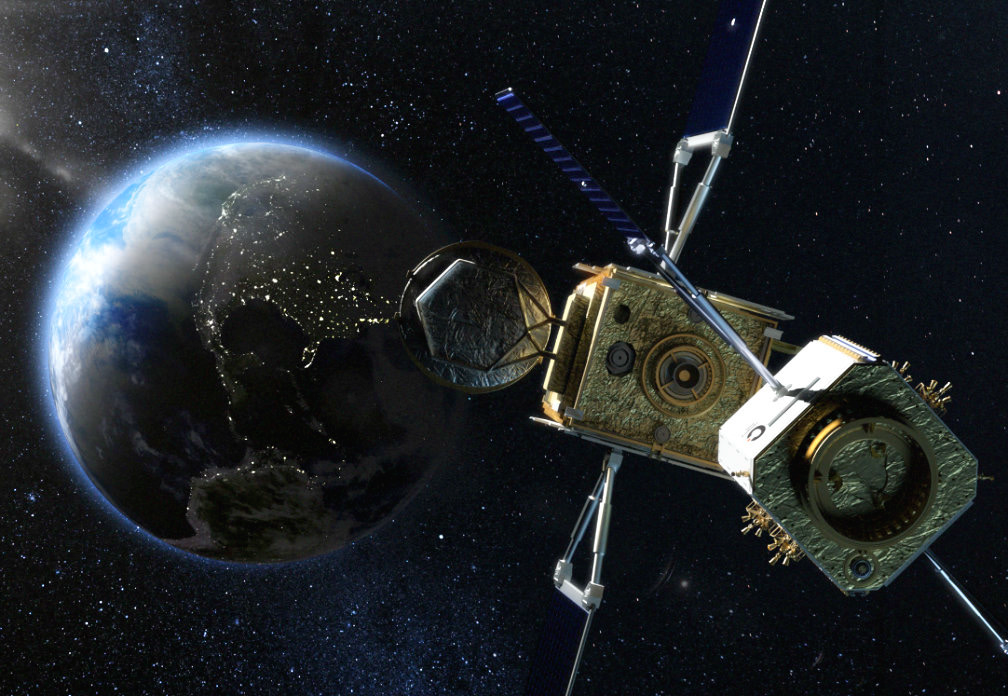
The launch, scheduled starting as soon as the second-half of 2026, will use the new European, light launcher, Vega C, to release the spacecraft into SSO for commissioning and critical tests. The servicer spacecraft will then be raised to the client object for rendezvous, capture and subsequent atmospheric reentry.
The space debris object removed by this mission is the upper part of a Vespa (Vega Secondary Payload Adapter) left in a ‘gradual disposal’ orbit, in compliance with space debris mitigation regulations, during the second flight of a Vega launcher in 2013.
Close in mass to a smallsat, the simple shape of this space debris object will allow to demonstrate the technologies of the spacecraft and its quartet of robotic arms, thus opening the way for more challenging missions with multiple captures per flight.
In 2019, ESA selected ClearSpace from a field of more than a dozen candidates to lead the first mission to remove an ESA- owned item from orbit.
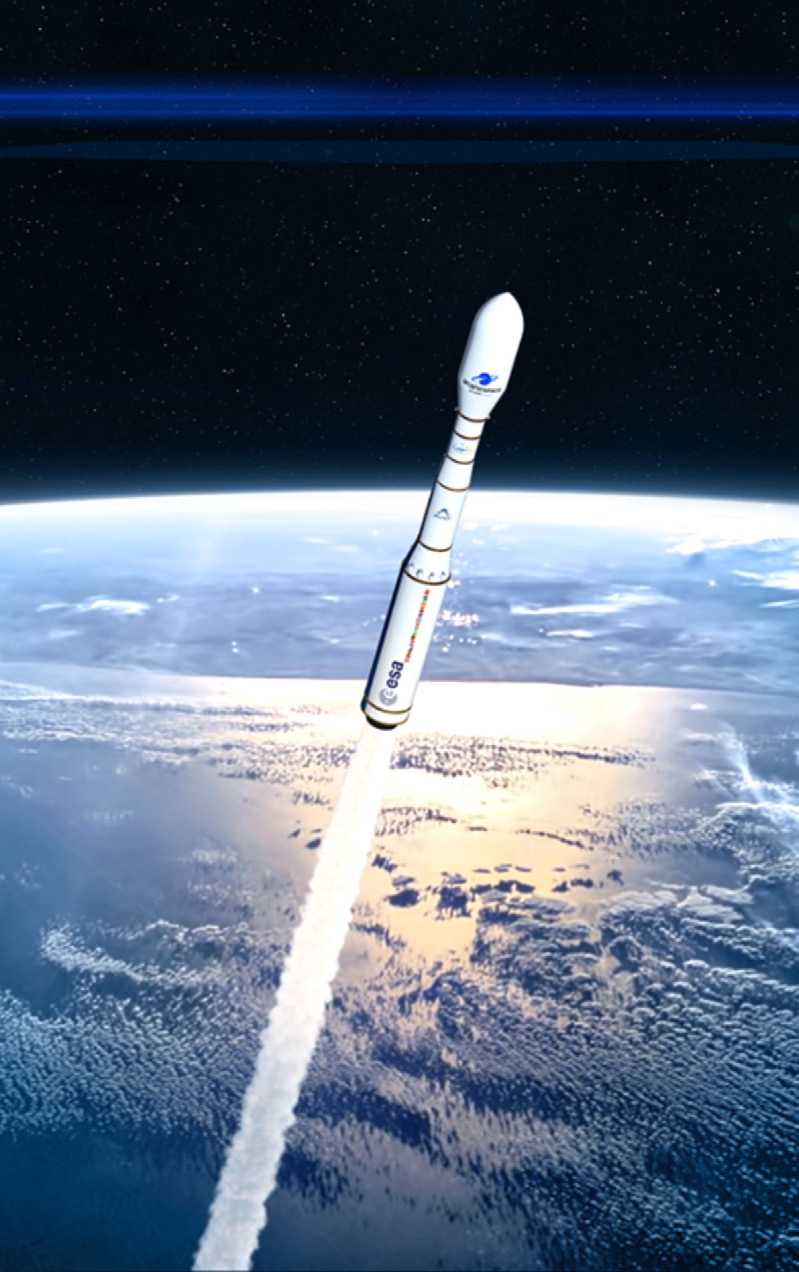
Artistic rendition of the Vega C rocket
in flight. Image is courtesy of Arianespace.
Supported by ESA’s new Space Safety Program, the mission is being procured as a service contract with a startup-led commercial consortium to help establish a new market for on-orbit servicing, as well as debris removal.
“Above us, there currently are over 34,000 pieces of space debris of more than 10 centimeters each as well as about 6,500 operational satellites in orbit, a number expected to rise to more than 27,000 by the end of the decade. These figures demonstrate the need to find innovative solutions for preserving the benefits of Space for humanity and life on Earth. At Arianespace, we are honored to deliver this mission with Vega C, thus supporting a sustainable use of Space.”
— Stéphane Israël, CEO of Arianespace.
“We are very enthusiastic about this deal with Arianespace. This secures ClearSpace’s access to space for our trailblazing space debris removal mission. The ClearSpace-1 mission demonstrates a turning point in the space industry as we urgently need to bring solutions to a fundamental problem. We look forward to this European collaboration and the potential for more missions in the future.”
— Luc Piguet, CEO and Co-founder of ClearSpace



